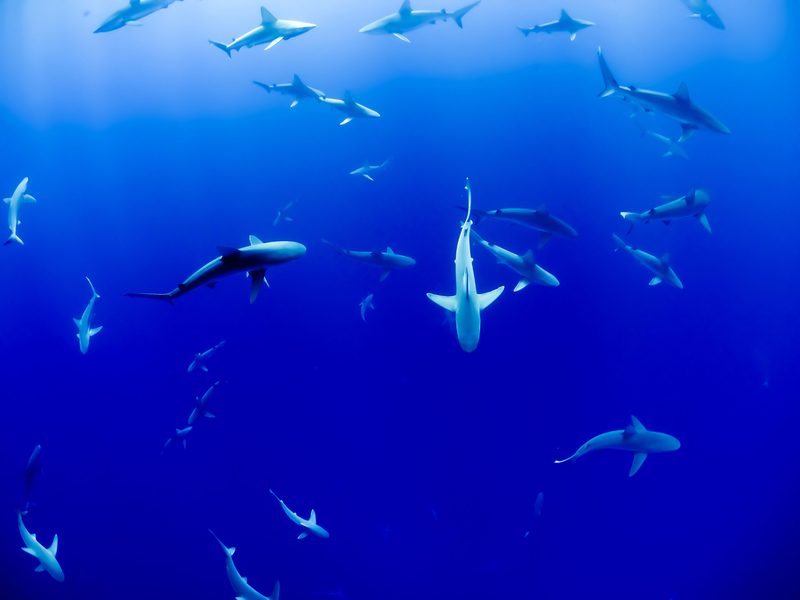(JNS)
University of Haifa researchers have been awarded a $100,000 National Geographic Wayfinder Grant to track the movement of sharks in the eastern Mediterranean Sea. Researchers will try to understand why the species thrives along the basin despite the impact of climate change on the region.
The study, which is being led by National Geographic Explorer Dr. Aviad Scheinin of the University of Haifa’s Morris Kahn Marine Research Station and head of its Marine Apex Predator Laboratory, and Dr. Leigh Livne, a postdoctoral researcher at his lab, builds on established collaborations across the eastern Mediterranean Sea to combine research with education for long-term conservation outcomes.
The Wayfinder grant is crucial to pinpointing the movement and reproduction of sharks and why they return to specific hotspots year after year.
Using a range of minimally invasive satellite tags (including a “Birth Alert Tag” to find parturition grounds of sharks), a network of fixed acoustic receivers, a suite of biological analyses, and the collection of environmental metadata, researchers hope to find where sharks are migrating and residing year-round in the eastern Mediterranean Sea.
The announcement of the National Geographic Society grant comes in advance of the Discovery Channel’s popular annual “Shark Week,” which this year takes place from July 23-30.

“Through National Geographic’s influential platform, we can scale up our story to reach the hearts and minds of scientists, children, and decision-makers alike,” Scheinin said. “This is a story about endangered species at the brink and our ability to discover the secrets about where they are most likely to survive under changing climatic conditions. It can also highlight humanity’s ability to protect and sustain these populations for future generations.”
Scheinin has tagged 103 sharks, and he is leading the Mediterranean’s first “Shark Tagging School” to deploy various state-of-the-art tags to monitor shark distribution. Most sharks have been tagged with acoustic transmitter tags, and his team has deployed a network of 10-15 passive acoustic receivers in areas of known aggregations along the Israeli coastal shelf.
Since sharks know no political borders, the researchers’ network of partners is seeking to provide science-based evidence to policymakers with the goal of enacting national-level protections for their shark aggregations similar to those that exist in Israel.
Israel is the only country where two shark species aggregate around the warm water effluent from coastal power stations (providing ideal access for study) that protects all elasmobranch species (sharks and rays) within its maritime borders.
This is significant because the eastern Mediterranean Sea basin serves as a model for other marine regions as the effects of climate change become ever more apparent, giving researchers an opportunity to understand species’ requirements, as habitats in the eastern Mediterranean Sea are in a “post-warming” state.
Livne is coordinating another aspect of the study. Her aspect of the research will focus on conservation physiology of sharks in the eastern Mediterranean, using a range of hormone and blood biochemical markers, as well as ultrasonography, to determine the fecundity and maternal condition of the sharks.
(Conservation physiology studies the physiological responses of organisms to environmental changes as a result of human alterations that might cause or contribute to the decline of their population.)
A part of the Israeli shark tagging team since 2019, Livne will assist Scheinin with implementing the catch-and-release training and sampling on board, as well as analyzing the data for meaningful conclusions that will benefit both species’ conservation.
“I think the danger aspect of sharks is a bit sensational,” Livne said. “In the ‘’’70s and ’80s, when the movie “Jaws” came out, the idea of sharks as predators dominated the conversation. Now, the public is learning more about what scientists have been saying for decade, and that is that sharks are very important to our ecosystem. They’re a stabilizing force and are critical to maintaining ecological balance in marine life.”










